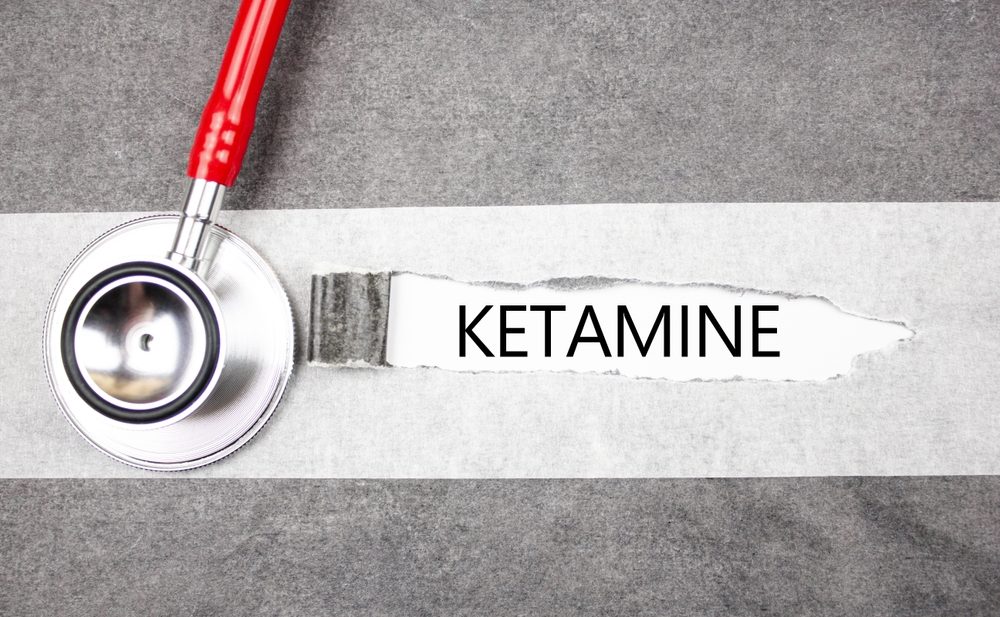- December 5, 2024
- by Shalini Murmu
- Treatment
Table of Contents
In the sphere of emotional health, where hope can occasionally feel like a tender flame, ketamine therapy has emerged as a pioneering treatment option. For those battling issues like treatment-resistant depression, PTSD, or chronic anxiety, this innovative therapy provides a level of relief and change that many believed was out of reach. However, not everyone’s experience with ketamine is the same. Understanding the diverse responses of patients to this treatment isn’t just as important.
Category 1: The Early Responders
The swift reaction seen in early responders is one of the most astonishing features of ketamine therapy. Unlike conventional antidepressants, which may take weeks or even months to show results, ketamine acts by engaging the brain in fundamentally different ways.
- Neurochemical Reset: Ketamine affects the NMDA receptors in the brain, enhancing glutamate—a neurotransmitter vital for synaptic communication and neuroplasticity. This increase can rapidly restore disrupted pathways linked to depression or anxiety.
- Brain Connectivity Boost: Early responders frequently gain from ketamine’s ability to encourage the development of new neural connections. This rewiring aids in better emotional regulation and cognitive flexibility, helping patients break free from stuck negative thought patterns.
- Unique Brain Chemistry: For some, their specific neurobiology aligns particularly well with how ketamine works. Genetic factors, receptor sensitivity, and existing levels of brain inflammation might all influence who responds rapidly.
Are There Chances Of Relapse Afterward?
While that initial relief can feel miraculous, it’s crucial to approach ketamine therapy with a realistic mindset. Early responders may still encounter hurdles in keeping their newfound sense of well-being.
The effects of ketamine, though powerful, can sometimes diminish over time. Without a solid aftercare plan, early responders might find their symptoms returning, often referred to as a relapse.
The quick relief can open emotional floodgates, particularly if patients haven’t had time to work through unresolved trauma. This can create a sense of vulnerability, raising the risk of symptom recurrence. Ketamine therapy targets symptoms but doesn’t always tackle the underlying causes of mental health issues. Without additional therapies such as counseling or behavioral interventions, patients may have difficulty achieving sustained recovery.
How to Reduce the Chances of Relapse
For those who respond quickly, the aim is to build on their early achievements while safeguarding against possible challenges.
- Bringing in talk therapy or trauma-focused methods can assist patients in processing and reinforcing the insights they’ve gained during ketamine sessions.
- Consistent booster sessions, as suggested by healthcare providers, can help to maintain the neural and emotional advantages of ketamine over time.
- Engaging in mindfulness, eating a balanced diet, and including regular exercise can further bolster the brain’s adaptability and resilience.
- Early responders gain a lot from solid support systems, whether it’s from family, friends, or mental health professionals, to help them manage emotional changes after treatment.
Category 2: The Standard Responders to Ketamine Therapy
If the early responders shine with a quick burst of hope, standard responders show us a steady and dependable path toward mental wellness. These individuals might not feel the rapid, life-changing relief that some others experience, but their results are just as important. They demonstrate that, for a lot of people, ketamine therapy takes its time, offering deep benefits gradually.
Who Experiences Standard Response To Ketamine Therapy?
Standard responders often represent the biggest group of people receiving ketamine infusion therapy. These individuals notice real improvements after a few sessions, usually within 1–2 weeks. Their reactions aren’t as quick as those of early responders, nor as slow as gradual adjusters; instead, their progress unfolds steadily and with a positivity in recovery.
- Mental Health History: People dealing with moderate to severe depression, even if it’s not treatment-resistant, might see a standard response.
- Biological Variability: Their brain chemistry reacts in a predictable way to ketamine’s effects, allowing for steady progress without extreme ups and downs.
- Supportive Environment: Standard responders often benefit from external factors like a solid support system or ongoing therapy, which enhance the effects of ketamine for depression.
These patients often feel a sense of hope, noticing a gradual easing of their mental health struggles, much like the fog clearing after a long, gloomy storm.
What Research Has To Say?
When it comes to ketamine therapy, official surveys and studies from government organizations offer valuable insights. One key study comes from the National Institute of Mental Health (NIMH), a U.S. federal agency focused on advancing mental health research.
In a groundbreaking clinical trial from 2013, the NIMH investigated the impact of ketamine infusion on people with depression. The findings revealed that nearly 50% of participants showed a significant decrease in depressive symptoms after their first treatment. While some felt relief within 24 hours (early responders), most participants fell into the standard responder category, showing clear improvement after a week of treatments.
The study also highlighted the importance of follow-up sessions to sustain progress. Standard responders were especially likely to gain from maintenance infusions, with their results peaking after multiple sessions.
What Does a Standard Response Look Like?
For people who respond to treatment, the experience with ketamine infusion is all about gradual progress instead of sudden changes. While everyone’s journey is different, there are some common patterns that emerge:
- Gradual Symptom Relief: Patients start to notice a gradual decline in depressive symptoms, like ongoing sadness, a drop in motivation, or a sense of hopelessness, over several weeks.
- Emotional Stabilization: Many say their emotional regulation improves, making them feel better equipped to deal with stress and manage everyday hurdles. I
- Improved Cognitive Function: Brain fog and lack of focus often clear up, leading to sharper, more concentrated thinking.
- Positive Behavioral Changes: As their mood improves, standard responders find themselves reconnecting with activities and relationships that used to seem daunting or out of reach.
This steady improvement can feel incredibly uplifting, particularly for those who have battled depression or anxiety for a long time. The gradual pace helps them weave these changes into their lives without feeling swamped.
Category 3: Late Responders to Ketamine Therapy
For some patients, the path to finding relief can be relatively delayed. Late responders are those who may not see immediate changes but eventually notice an improvement after going through ketamine infusion therapy. Although the waiting game can be tough, the outcomes frequently turn out to be worthwhile, offering hope to those who think nothing works fast enough.
If you’re among those whose mind and body are taking their sweet time to react, remember this: a late response doesn’t imply that the treatment isn’t working. It merely underscores the complex and individualized journey of healing with ketamine therapy.
Why Do Some People Respond Late?
The brain functions as an exceptionally complex organ, with its response to ketamine infusion therapy showing considerable variation among different people. While ketamine primarily works by restoring synaptic connections and increasing glutamate production, those who respond late may have specific physiological or psychological factors that slow down this process.
- Severity and Chronicity of Illness: People dealing with long-term, treatment-resistant depression or PTSD might have more deeply entrenched neural patterns that take longer to change.
- Underlying Inflammation: Ongoing inflammation in the brain, which is often connected to depression and anxiety, can obstruct the initial impact of ketamine.
- Genetic Variability: Individual differences in how a person processes ketamine or their sensitivity to receptors can delay their response.
- Psychological Readiness: Recovery involves more than just biology; it’s also emotional. For some, addressing deeper layers of trauma or resistance to change might slow down how quickly the mind can fully benefit from the therapy.
What Mental Health Conditions Generally Show a Delayed Response?
Certain mental health issues are more prone to lead to a delayed reaction to ketamine infusion therapy. These include:
- Chronic PTSD: Those with deeply rooted trauma may find it takes them longer to feel relief as their brain works through and restructures these memories during treatment.
- Severe, Treatment-Resistant Depression: Patients who have gone through multiple antidepressant medications without success often fall into this group. Their neural pathways might need extra time to adjust to ketamine’s effects.
- Anxiety Disorders with Co-occurring Conditions: Generalized anxiety or social anxiety, especially when combined with depression, may cause a slower response as the brain deals with various stressors.
- Obsessive-Compulsive Disorder (OCD): The repetitive and deeply embedded thought patterns seen in OCD often require longer treatment durations before any significant changes are noticed.
What Should You Do If You Are Responding Late To The Therapy?
If you find yourself responding slowly, it’s important to tackle ketamine therapy with a mindset of patience and proactivity. Here’s how you can make the most of your experience:
- Communicate Openly with Your Clinician: Don’t hesitate to voice any worries you have about your progress. Chances are, your healthcare professionals might need to tweak your dosage, and infusion schedule, or explore additional therapies to help you respond better.
- Explore Holistic Support: Based on your response to the treatment, your experts combine ketamine infusion therapy with proven treatments like cognitive behavioral therapy (CBT), mindfulness techniques, or therapies focused on trauma. These can boost the effects of ketamine by tackling the emotional hurdles you might be facing.
- Stay Consistent with Maintenance: Those who respond late usually find extra sessions beneficial. Booster infusions could help solidify the gradual changes happening in your brain.
- Make Lifestyle Changes a Priority: Adding regular exercise, a balanced diet, and ways to reduce stress can enhance the therapy’s effectiveness and boost your overall resilience.
- Give Yourself Time: Remember, healing isn’t a straight line. Sometimes, progress is happening beneath the surface before it’s visible. Trust the journey and the knowledge of your healthcare professional.
Are Late Responses Common?
Experiencing a delayed response to ketamine therapy isn’t unusual and can happen under certain conditions. Here are some typical scenarios:
- High Emotional Blockage: People with unresolved or deeply ingrained trauma might need several sessions before they see any significant breakthroughs.
- First-Timers to Novel Treatments: Those who are not familiar with ketamine infusion therapy or feel hesitant might take longer to respond as their minds adjust to the new experience.
- Chronic Relapse Histories: Individuals who often face depressive episodes or frequent relapses might notice slower but steady progress as their brains work towards establishing healthier patterns.
- Complex Comorbidities: Patients who are dealing with multiple mental health issues, like depression alongside substance use disorder, often require longer treatment times before they start seeing visible improvements.
Non-responders to Ketamine Therapy
When it comes to ketamine therapy, non-responders highlight just how unique and intricate the healing journey can be. For those who step into the world of ketamine infusion therapy filled with optimism, not seeing any significant changes can be incredibly discouraging. Not responding does not mean a person has faced a deadlock in their healing process—it highlights that additional exploration is recommended.
Common Challenges Non-Responders Face
Individuals who don’t respond to ketamine therapy often deal with a whirlwind of frustration, self-doubt, and a feeling of hopelessness. Here are some of the typical hurdles they encounter:
- Emotional Disappointment: Hearing about others’ success stories and their quick progress can lead to feelings of inadequacy or sadness when results are absent.
- Financial and Time Investment: Engaging in ketamine infusion therapy takes a lot of time and money, so it’s tough for non-responders to cope with the lack of payoff.
- Isolation and Doubt: Many non-responders wonder if they’re the only ones experiencing this or if there’s something fundamentally “off” about them that hinders their progress.
- Strain on Support Systems: The emotional strain of not responding can ripple out to loved ones, adding more pressure to their personal relationships.
What Causes Non-Responsiveness to Ketamine Therapy?
Multiple biological, psychological, and environmental influences could result in someone not responding to ketamine when addressing depression. Here’s a breakdown:
Biological Factors
- Neurochemical Variability: The way the NMDA receptor operates can differ among individuals, which might make the treatment less effective for some.
- Metabolic Differences: Some folks process ketamine either too quickly or not effectively enough, which can lessen its intended benefits.
- Chronic Inflammation: High levels of inflammation in the brain, often found in treatment-resistant depression, can dampen the efficacy of ketamine.
Psychological Factors
- Severe Comorbid Conditions: Other mental health issues, like substance abuse or severe anxiety, can complicate how the brain reacts to ketamine infusion therapy.
- Deeply Entrenched Trauma: For certain individuals, unresolved trauma can block their ability to fully engage with the treatment.
Treatment-Related Factors
- Suboptimal Dosage: If the dosage or infusion method isn’t right, it can negatively impact how a patient responds.
- Inadequate Preparation or Integration: Without the right therapeutic guidance before and after ketamine sessions, the brain might struggle to process and maintain any positive changes.
What Should You Consider When There’s No Response To Ketamine Therapy?
When someone doesn’t respond to ketamine therapy, it becomes important to go from feeling irritated to being inquisitive about the circumstances at play. Here are some things for patients and mental health professionals to think about:
If some patients aren’t responding, it might help to dig a little deeper into their diagnosis to make sure it’s spot on. Conditions like depression with psychotic symptoms or neurodevelopmental issues might need a different treatment strategy. Consider whether things like chronic pain, autoimmune disorders, or hormonal issues might be messing with how well the therapy works.
Review the Treatment Protocol
- Adjust the Dosage: Sometimes, tweaking the dose up or down can lead to better outcomes.
- Infusion Frequency: Some individuals might need more frequent or longer sessions to really feel the benefits.
- Try Different Administration Methods: If traditional IV infusions aren’t working, it could be worth looking into options like intranasal ketamine or taking it orally.
Combining ketamine infusion therapy with psychotherapy, mindfulness, or neurofeedback can enhance its impact, even for those who don’t see results right away. Genetic testing related to pharmacology can reveal how an individual’s unique genetic characteristics influence their reactions to ketamine and various therapies.
Hope for Those Who Don’t Respond
Just because you aren’t responding to ketamine therapy doesn’t mean the journey is over. Actually, many people who initially don’t respond find relief through different methods, complementary therapies, or other cutting-edge treatments. When searching for ‘ketamine therapy nearby’ and feeling unsure about how well it works, collaborating with a qualified clinician can be very important. Together, you can explore personalized changes or even entirely new treatment options that fit your specific needs.
While ketamine may not be a universal solution for depression, it serves as a significant pathway to healing for many individuals. By facing the challenges and possibilities of not responding, both patients and caregivers can build resilience and discover new ways to achieve mental wellness. Every step taken, even when it feels like progress is slow, offers valuable lessons. And with the right support, even those who don’t respond at first to ketamine infusion therapy can find hope on the path ahead.
Reach Out For Help!
Whether you’re exploring ketamine therapy, searching for a trusted professional, or seeking a customized treatment plan tailored to your unique needs, North America Behavioral Health Services is here to guide you every step of the way.
Your mental health deserves the highest level of care and compassion, and our network of dedicated facilities and professionals is ready to help you navigate this transformative process.
If you’re feeling unsure about where to begin or frustrated with treatments that haven’t worked, don’t wait another day. Reach out to us now and let us connect you with experts who specialize in personalized mental health care.
Chart a path to a brighter & healthier future!
















